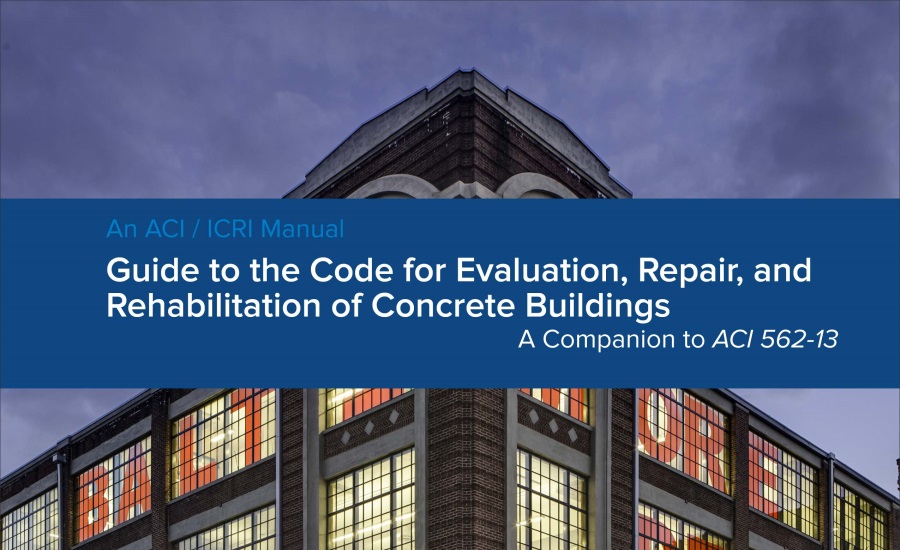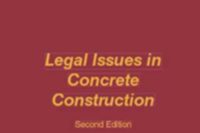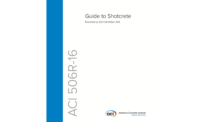The American Concrete Institute announces the availability of a new invaluable publication for concrete industry professionals—Guide to the Code for Evaluation, Repair, and Rehabilitation of Concrete Buildings.
Published jointly by American Concrete Institute and International Concrete Repair Institute as a printed and digital book, the guide provides assistance and examples to professionals engaged in the repair of concrete buildings. The guide has been developed to serve as a companion to ACI 562-13 Code Requirements for Evaluation, Repair, and Rehabilitation of Concrete Buildings.
The primary purpose of this guide is to help licensed design professionals gain more knowledge, skill, and judgment to interpret and properly use ACI 562. Although specifically developed for licensed design professionals, the guide will also serve to provide insight into the use and benefits of ACI 562 for contractors, material manufacturers, building owners, and building officials. The new guide is separated into two main components: Chapter Guides and Project Examples. These two components work together to provide additional information pertaining to how to interpret the performance requirements in ACI 562 and how the requirements may be applied to a broad range of projects.
The Chapter Guides follow the organization of ACI 562, broken down by the corresponding sections. They include particular insight into how the chapters and sections of the code fit within the whole of the project. Where applicable, flowcharts are provided to illustrate how to navigate the various provisions of ACI 562. References to Project Examples are provided to illustrate how specific provisions within each chapter of ACI 562 are incorporated into the design process. In some instances, additional limited-scope examples are included within the Chapter Guides to better illustrate a point that is not covered by the Project Examples.
The Chapter Guides include information on several topics related to use of the code including applicability of ACI 562; selection of the building code for the repair design; preliminary evaluations to determine a compliance method for meeting the code requirements; strength reduction factors and load combinations both during and after the repair; requirements for evaluation, determination of materials properties, and load testing; considerations for design of structural repairs; durability requirements; construction considerations; and quality assurance.
The guide’s Project Examples illustrate the use of the code for concrete building repair, rehabilitation, or strengthening projects from inception through completion. These real-world examples are based on actual projects and demonstrate how ACI 562 could be used when repairs are designed. These examples provide the licensed design professional with familiarity and confidence to successfully implement the provisions of ACI 562 on several types of projects including:
- Typical Parking Garage Repairs;
- Typical Façade Repairs;
- Repair of Historic Structure for Adaptive Reuse;
- Strengthening of Two-Way Flat Slab; and
- Strengthening of Double-Tee Stems for Shear.
Funding to develop the guide has been provided by the American Concrete Institute, International Concrete Repair Institute, and Strategic Development Council.
Vision 2020, a document prepared in part by the Strategic Development Council, formulated a set of goals for improving the efficiency, safety and quality of concrete repair and protection activities. The new Guide successfully solidifies the Vision 2020 goals by providing the tools to execute concrete repair and protection, thereby extending the useful life of existing installations, a key factor in producing a sustainable environment.
Follow @ConcreteACI on Twitter, and join the conversation by tweeting #ConcreteRepair. Learn more and order the Guide to the Code for Evaluation, Repair, and Rehabilitation of Concrete Buildings at www.concrete.org or www.icri.org.






Report Abusive Comment